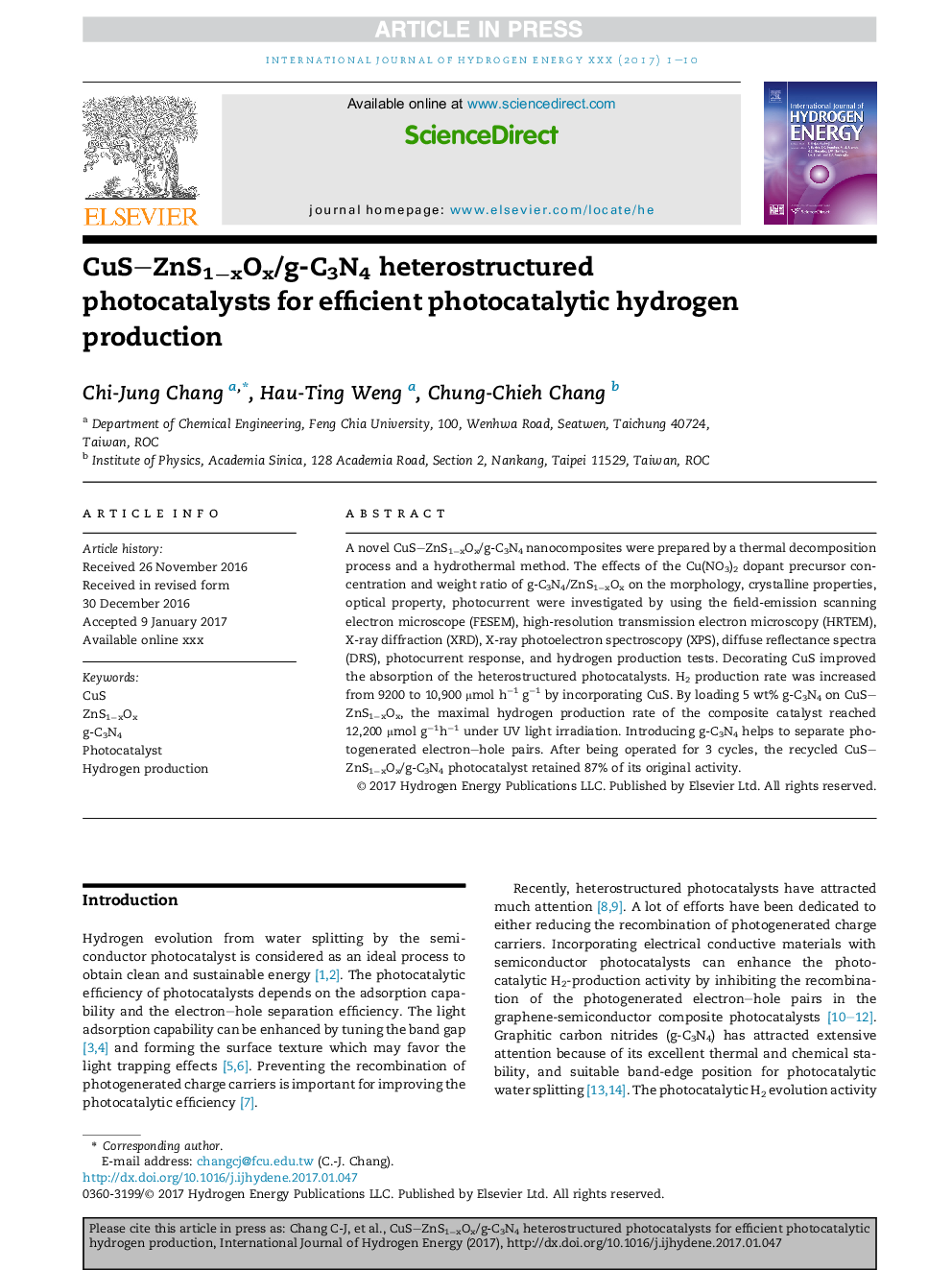| Article ID | Journal | Published Year | Pages | File Type |
|---|---|---|---|---|
| 5145526 | International Journal of Hydrogen Energy | 2017 | 10 Pages |
Abstract
A novel CuSZnS1âxOx/g-C3N4 nanocomposites were prepared by a thermal decomposition process and a hydrothermal method. The effects of the Cu(NO3)2 dopant precursor concentration and weight ratio of g-C3N4/ZnS1âxOx on the morphology, crystalline properties, optical property, photocurrent were investigated by using the field-emission scanning electron microscope (FESEM), high-resolution transmission electron microscopy (HRTEM), X-ray diffraction (XRD), X-ray photoelectron spectroscopy (XPS), diffuse reflectance spectra (DRS), photocurrent response, and hydrogen production tests. Decorating CuS improved the absorption of the heterostructured photocatalysts. H2 production rate was increased from 9200 to 10,900 μmol hâ1 gâ1 by incorporating CuS. By loading 5 wt% g-C3N4 on CuSZnS1âxOx, the maximal hydrogen production rate of the composite catalyst reached 12,200 μmol gâ1hâ1 under UV light irradiation. Introducing g-C3N4 helps to separate photogenerated electron-hole pairs. After being operated for 3 cycles, the recycled CuSZnS1âxOx/g-C3N4 photocatalyst retained 87% of its original activity.
Related Topics
Physical Sciences and Engineering
Chemistry
Electrochemistry
Authors
Chi-Jung Chang, Hau-Ting Weng, Chung-Chieh Chang,
